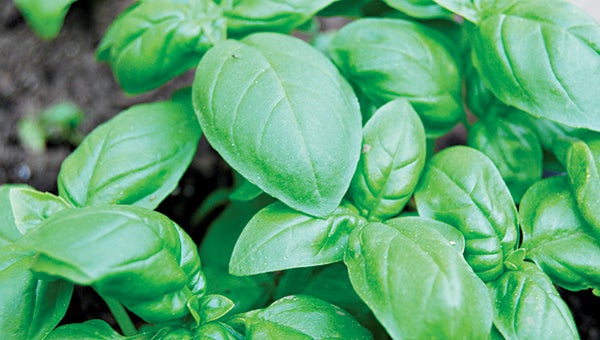It’s not summer unless basil is growing in the garden
Published 12:00 am Sunday, June 8, 2014
Summer fare often includes juicy ripe tomatoes paired with mozzarella cheese, a dribble of olive oil and fresh basil leaves. Basil is the most popular herb sold according to Dr. Lelia Scott Kelly, Consumer Horticultural Specialist with the MSU Extension Service. It is an easy herb to grow with various shapes and sizes. Basils are equally attractive in containers and border plantings as well as formal herb gardens.
The American Herb Society tells us that basil originated in Asia and Africa and most likely was brought to ancient Greece by Alexander the Great (356-323 BS). The English brought it home from India in the 1500’s and it found its way to the US in the 1600’s. A sacred herb in India, it was considered the herb of love because it could attract a lovely lady with its aroma. In ancient times, it was also considered a witches herb and was mixed in potions and used against enemies.
Basil can either be grown from transplants available at local nurseries or from direct seeding. It grows best in full sun with rich soil, a pH of 6 and excellent drainage. An annual member of the mint family, many basils are quite effective in a landscape with other ornamentals. Several planted together can make a particularly attractive container if at least one purple variety is mixed in with several green ones.
Ocimum basilicum (sweet basil) is the most widely grown of the genus. The common species sweet basil, a classic for pesto, generally grows 18-36 inches tall with bright green leaves which are broad and smooth. It will bush out after each pinching/harvest and can provide tasty leaves all summer. White flowers will appear on the terminal branch ends and are quite attractive to bees but should be removed as soon as they appear to prolong the harvest period for as long as possible and can be added to salads.
There are various named varieties of sweet basil with distinctive growth habits and flavor. “Anise” or licorice basil is tall and lanky with pink whorls of blooms and a sweet licorice flavor. “Cinnamon” combines the traditional basil flavor with a strong hint of cinnamon. Attractive purple flowers rise above the dark green leaves of this 24 inch tall basil which is popular for potpourri and teas. Another is “Lemon basil”, particularly tasty in teas, chicken dishes and pesto. “Purple Ruffles” looks great in a garden as a purple ornamental and is one of the best basils to use to prepare basil flavored vinegar (Dr. Kelly says never use white vinegar for herb flavored vinegars. Instead use wine vinegar, rice or apple cider vinegar). “Red Rubin” is another popular purple basil with a slightly sweet flavor that holds its color well and is a standout in any garden. “Napoletano” has huge crinkled green leaves up to 4 inches long and is quite popular for use in Italian dishes. The leaves are lush and sweetly fragrant with rich flavor.
“Spicy” and “Finissimo Verde a Palla” are both globe shaped basils. They are ideal for containers and have small leaves and a growing habit of 12-14 inches in height . “Sweet Thai”, “True Thai”, and “Lime” are spicier basils which are popular in Thailand cooking and are increasing in demand in the US as we become more acquainted with that Far-East cuisine. The green leaves are smaller and the scents are much stronger.
Add fresh basil carefully near the end of cooking time as it bruises and blackens easily and can turn bitter Martha Stewart warns. She has a great way to preserve the harvest for winter cooking. Wash and dry the leaves, chop them in a food processor, then slowly add olive oil through the processor’s feeding tube until the mixture becomes a wet paste. Freeze it in ice cube trays and the cubes in a freezer proof bag. They retain much of their color and can be dropped into soups, stews and sauces long after the frost has killed the cold sensitive summer plantings. The flavor is much better than dried basil.
The best time of day to harvest any type of herb is early morning, just after the dew has dried. Later in the day, the oil becomes diluted by internal water movement via transpiration according to the MSU Extension publication “Easy to Grow Herbs for the Landscape”.
Herbs are a fascinating group of plants that man has used for centuries for food enhancement and medicinal purposes. Most are easy to grow and require very little to flourish if given the right conditions.
•
Miriam Jabour, a Master Gardener and Master Flower Show judge, has been active in the Openwood Plantation Garden Club for over 35 years. Write to her at 1114 Windy Lake Drive, Vicksburg MS 39183.






